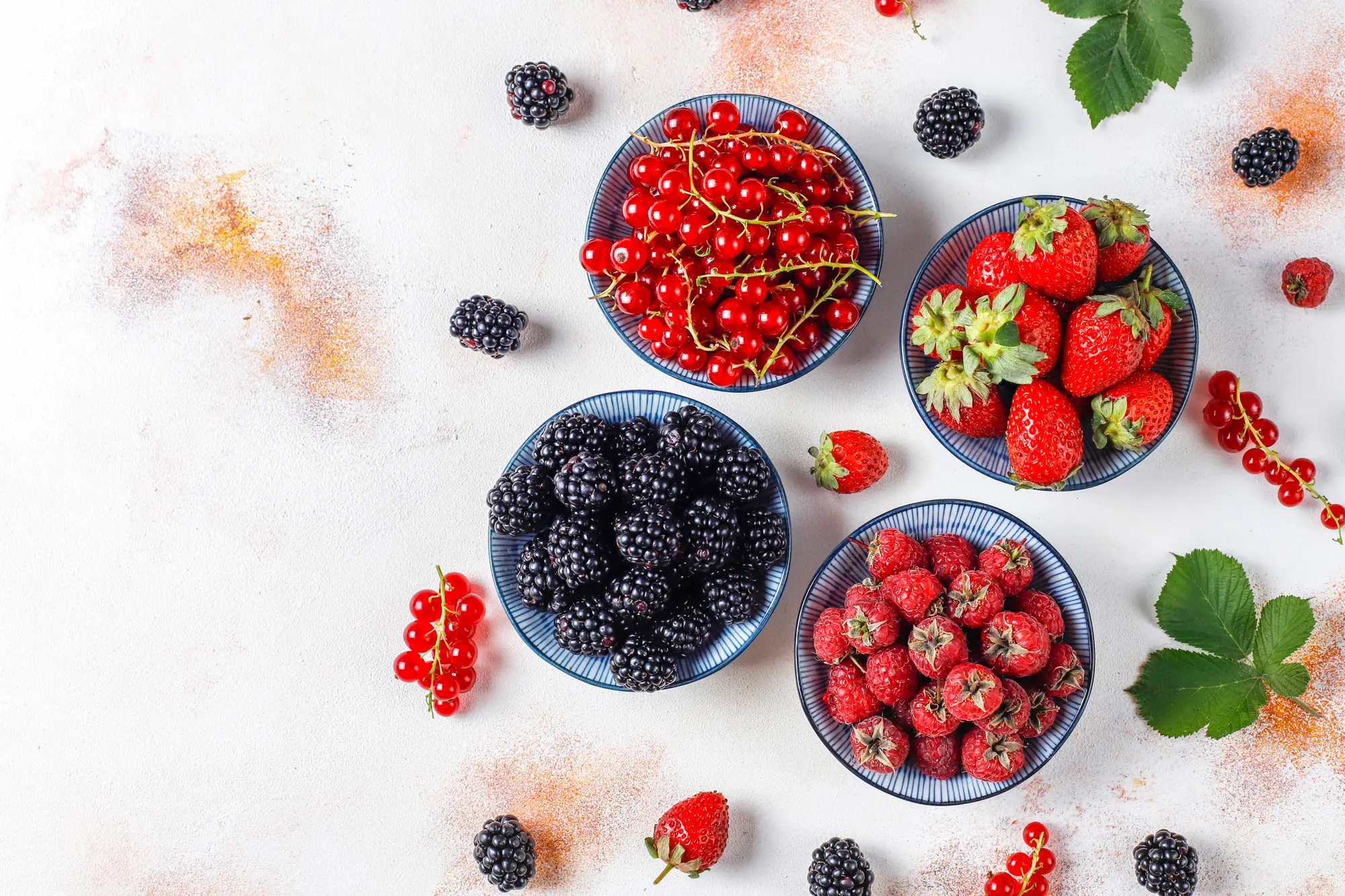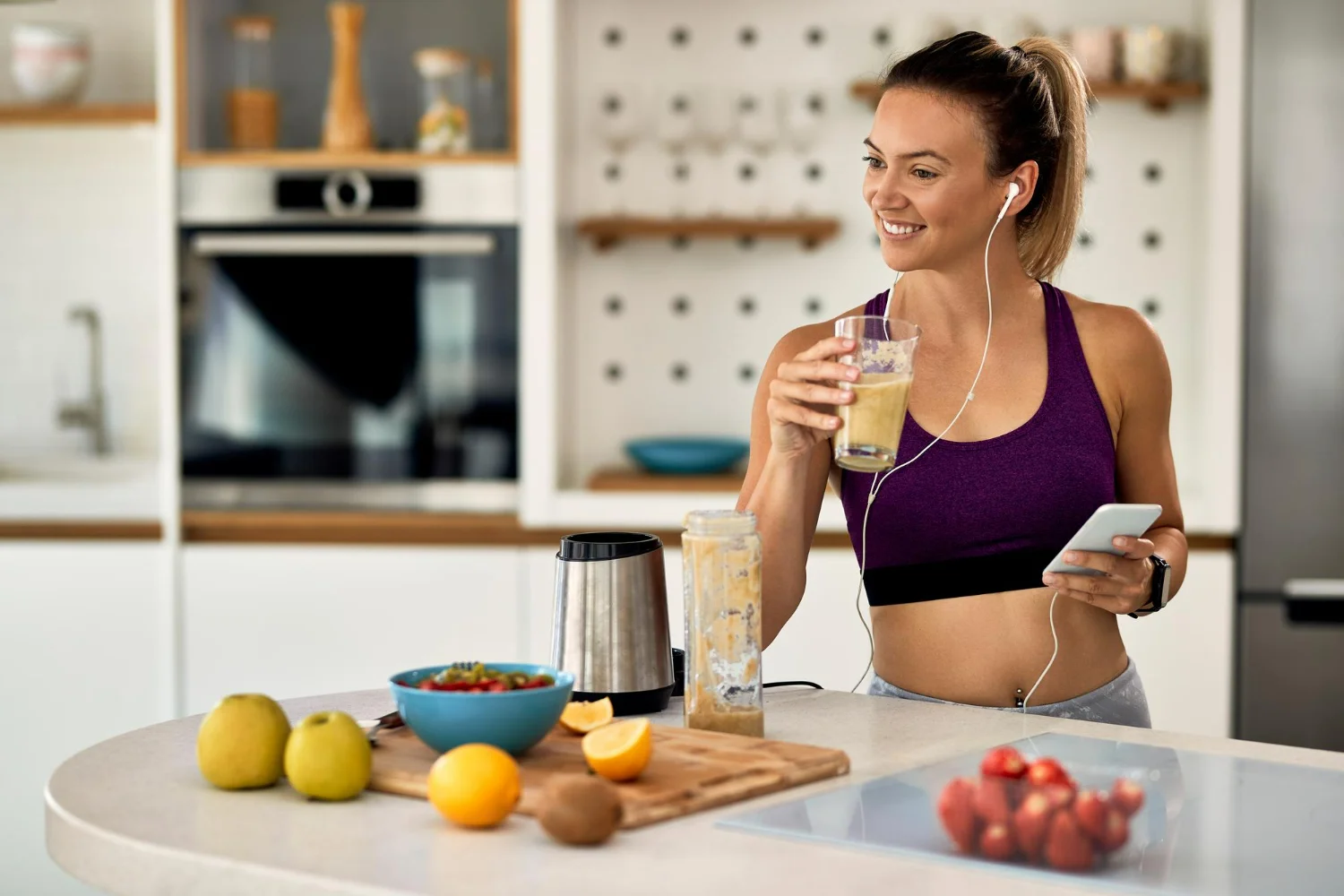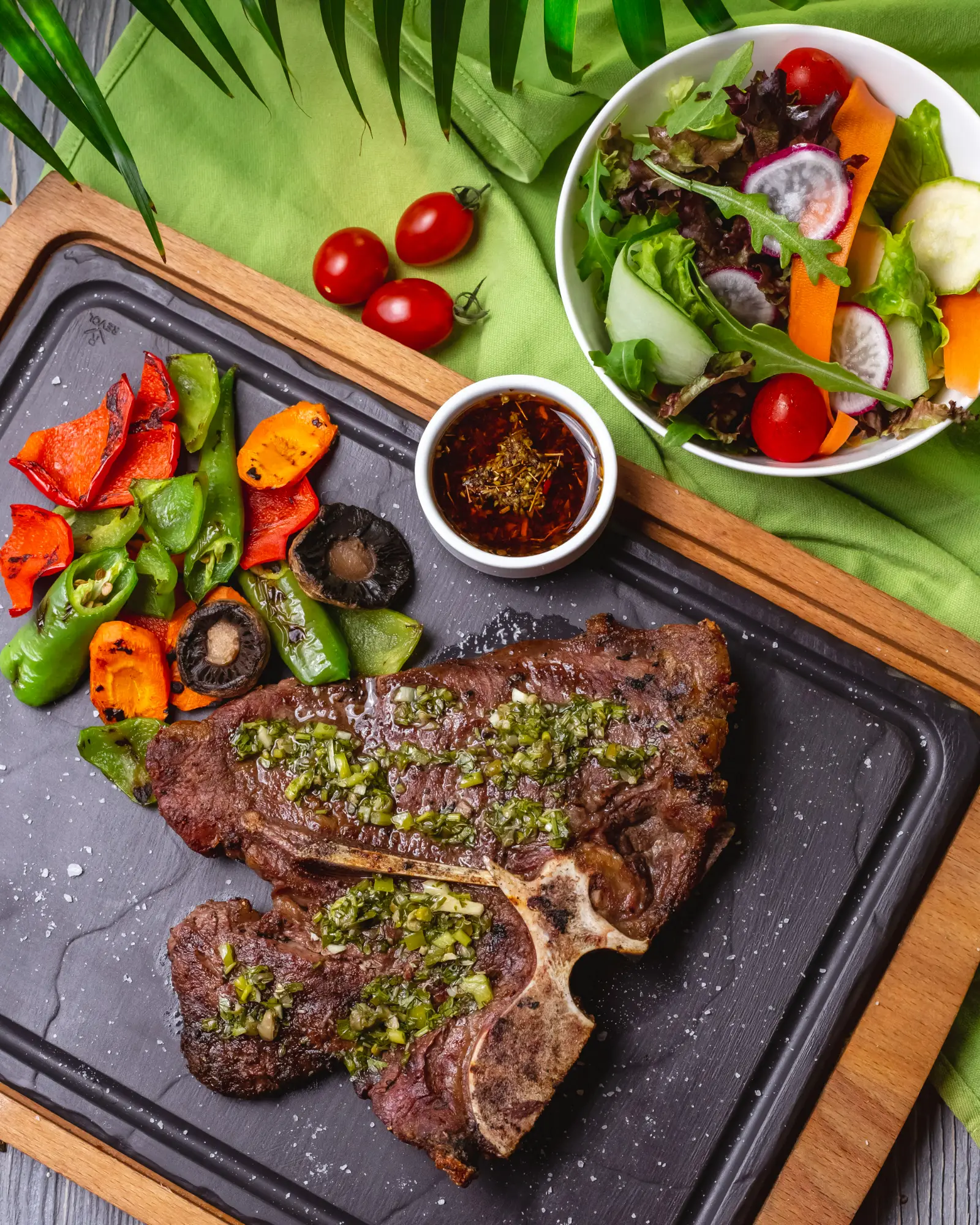Are you struggling to shed those extra pounds and reduce belly fat naturally while looking for ways to feel fuller for longer and curb cravings? The answer might be hiding in plain sight – fiber! Often overlooked in modern diets, this essential nutrient can be your secret weapon against weight loss. Moreover, incorporating fiber foods for weight loss into your daily routine can make a significant difference in achieving your fitness goals.
In addition to promoting regularity, fiber plays a decisive role in weight management by promoting feelings of satiety, keeping your blood sugar levels stable, and supporting a healthy gut microbiome. Consequently, all these factors contribute to successful weight loss.
How Can A Low Calorie High Fiber Diet Help You Lose Weight?
There’s some fascinating science behind how fiber helps to lose weight.
Filling Foods For Weight Control (Satiety)
Fiber takes longer to digest than other nutrients, so it stays in your stomach longer. This nutrient keeps you fuller for extended periods, helping you resist unhealthy snacking and reducing overall calorie intake [1].
Studies have shown that increasing fiber intake can lead to decreased hunger hormone levels (ghrelin) and increased fullness hormone levels (peptide YY), further promoting satiety [2].
Blood Sugar Balance
Incorporating fiber foods for weight loss can naturally aid in blood sugar balance, helping to prevent spikes and crashes that often lead to cravings by slowing down the absorption of carbohydrates [3].
Moreover, this nutritious power element prevents blood sugar spikes and crashes, which can lead to cravings and overeating. Consequently, stable blood sugar levels contribute to sustained energy throughout the day, avoiding the need for sugary pick-me-ups.
Gut-friendly Foods For Weight Loss
Fiber meals, gut-friendly foods for weight loss, are like fertilizer for your gut microbiome, the trillions of good bacteria that reside in your digestive system. Additionally, these friendly bacteria are crucial in digestion, nutrient absorption, and immune function.
When you consume enough fiber, you feed these good bacteria, promoting a healthy gut environment. Furthermore, research suggests a connection between a balanced gut microbiome and weight management, although the exact mechanisms are still being explored.
Types of Dietary Fiber
Here’s a breakdown of the two main types of dietary fiber and their specific benefits:
Soluble Fiber
As already explained, this type of fiber forms a gel-like substance in your gut, further promoting satiety and blood sugar control. Examples include oats, chia seeds, and apples.
Insoluble Fiber
This type of fiber adds bulk to your stool and aids with regularity. It also helps move food through your digestive system more efficiently [5]. Examples include whole-wheat Bread, vegetables, and nuts.
Prebiotics
While not technically fiber, prebiotics are carbohydrates that act as food for your gut bacteria [6]. Including prebiotic-rich foods like bananas, garlic, and artichokes can further support a healthy gut microbiome. For an added gut health boost, include prebiotic-rich foods in your meals, as they support a balanced microbiome, further aiding weight management
Remember, a healthy gut is linked to overall well-being, and weight management is just one piece of the puzzle. Incorporating fiber-rich foods into your diet will nurture your gut health and set you up for success on your weight loss journey.
Top 10 High Fiber Foods for Weight Loss
Here’s a curated list of the top 10 satiety-boosting fiber-packed foods to incorporate into your diet:
Lentils (15.6 grams of fiber per cooked cup)

These protein-packed legumes are a triple threat to weight loss. They’re high in fiber (both soluble and insoluble), keeping you full and satisfied. Lentils also boast a low glycemic index, meaning they won’t cause blood sugar spikes, and are a great source of plant-based protein, further promoting satiety. Think beyond soups and stews! Explore lentil salads, veggie burgers, or even a hearty shepherd’s pie. It is, no doubt, a miraculous fiber diet for weight loss.
Berries (3-8 grams of fiber per cup, depending on the variety)
Don’t underestimate the power of a delicious bowl of berries! They’re a fantastic source of fiber, vitamins, and antioxidants, all beneficial for weight management and overall health. Moreover, their natural sweetness can help curb cravings for sugary treats. Enjoy them fresh, frozen, or blended into a smoothie for a fiber- and nutrient-rich breakfast.
Chia Seeds (10 grams of fiber per 2 tablespoons)

These tiny powerhouses pack a severe fiber punch! Chia seeds are a low-calorie, high-fiber food for weight loss. Fiber forms a gel in your stomach, promoting satiety and slowing down digestion. They’re also a great source of healthy fats and protein, making them a well-rounded weight loss ally. Sprinkle them on yogurt, oatmeal, or salads for an added fiber boost.
Brussels Sprouts (3.3 grams of fiber per cup, cooked)

Don’t let their childhood reputation scare you away! Brussels sprouts are cruciferous vegetables loaded with fiber and essential nutrients like vitamin C and sulforaphane, which may aid in weight management. Roast them for a delicious side dish, or try them shredded in a salad for added texture and fiber.
Avocados (10 grams of fiber per whole avocado)
This creamy superfood isn’t just delicious; it’s also a great source of healthy fats and fiber, both contributing to feelings of fullness. Avocados are a versatile ingredient, perfect for adding to toast, salads, or even smoothies. Remember, portion control is vital – half an avocado is a good serving size for most meals.
Flaxseeds (2.8 grams of fiber per tablespoon, ground)
Like chia seeds, flaxseeds are another excellent source of fiber, particularly soluble fiber. They’re also rich in omega-3 fatty acids, which may help regulate appetite and promote a healthy metabolism. Grind them fresh for maximum benefit, and add them to smoothies, oatmeal, or baked goods for a fiber boost.
Whole-wheat Bread (4 grams of fiber per slice)
Ditch the white bread and opt for whole-wheat instead! Whole grains are a natural source of fiber, keeping you feeling fuller for longer and aiding in digestion. Look for whole-wheat Bread that lists “whole wheat” as the first ingredient for maximum fiber content. Toast a slice for breakfast, or enjoy a whole-wheat sandwich packed with lean protein and veggies.
Pears (6.5 grams of fiber per medium pear
This sweet and juicy fruit is a delicious way to increase fiber intake. Moreover, pears are an excellent source of soluble and insoluble fiber, promoting satiety and gut health. Additionally, their high water content keeps you hydrated, which is crucial for weight management. Enjoy them alone, sliced into a salad, or baked with a sprinkle of cinnamon for a warm treat.
Kidney Beans (15 grams of fiber per cooked cup)
Like lentils, kidney beans are another powerhouse legume loaded with fiber and protein. They’re a budget-friendly way to add a fiber and nutrient boost to your diet. Enjoy them in chili, tacos, or a hearty bean salad.
Sweet Potatoes (4 grams of fiber per medium potato)
Sweet potatoes offer a delicious alternative to regular potatoes. They’re a good source of fiber and complex carbohydrates, which provide sustained energy without the blood sugar crash. Roast them with herbs and spices for a satisfying side dish, or enjoy them mashed for a healthy comfort food option.
Nutritious High Fiber Meal Recipes
Knowing the benefits is great, but putting them into practice is even better! Here are 3 delicious and easy-to-follow recipes that incorporate some of the fiber powerhouses we just mentioned:
Recipe 1: High-Fiber Breakfast Bowl (packed with protein and healthy fats)
This energizing breakfast bowl is a fantastic way to kickstart your day with fiber and keep you feeling full until lunchtime.
Ingredients
- 1/2 cup rolled oats (cooked)
- 1/4 cup Greek yogurt
- 1/4 cup berries (your choice)
- 1 tablespoon chia seeds
- 1/4 cup chopped nuts (almonds, walnuts)
- A drizzle of honey (optional)
Instructions
- Cook the rolled oats according to package instructions.
- Combine cooked oats, Greek yogurt, berries, chia seeds, and nuts in a bowl.
- Drizzle with honey for a touch of sweetness (optional).
Fiber Powerhouse Focus: Oats, berries, and chia seeds contribute significant fiber to this recipe, promoting satiety and aiding digestion. Greek yogurt adds protein for sustained energy, while nuts offer a dose of healthy fats.
Recipe 2: Lentil Soup with Roasted Vegetables (hearty and satisfying)
This warm and comforting soup contains protein, fiber, and essential nutrients. It’s a perfect lunch or dinner option that keeps you feeling full without weighing you down.
Ingredients
- 1 cup brown lentils, rinsed
- 4 cups vegetable broth
- 1 onion, chopped
- 2 carrots, chopped
- 2 celery stalks, chopped
- 1 clove garlic, minced
- 1 can (15 oz) diced tomatoes
- 1 teaspoon dried thyme
- Salt and pepper to taste
- 1 cup chopped kale or spinach (optional)
For roasting
- 1 tablespoon olive oil
- 1 head of broccoli, cut into florets
- 1 red bell pepper, sliced
Instructions
- Preheat oven to 400°F (200°C). Toss broccoli and bell pepper with olive oil, salt, and pepper. Spread on a baking sheet and roast for 20-25 minutes or until tender-crisp.
- Combine lentils, vegetable broth, onion, carrots, celery, garlic, diced tomatoes, and thyme in a large pot. Bring to a boil, then reduce heat and simmer for 20-25 minutes or until lentils are tender.
- Once lentils are cooked, stir in kale or spinach (if using) and roasted vegetables—season with salt and pepper to taste.
Fiber Powerhouse Focus: Lentils are the show’s star, providing a hefty dose of fiber and protein. Vegetables like broccoli and carrots add additional fiber and essential vitamins, while the broth keeps you hydrated.
Recipe 3: Fiber-packed salad with Berries and Quinoa (refreshing and light)
This vibrant salad is a perfect light lunch or side dish. It’s bursting with flavor, fiber, and nutrients, making it a healthy weight-loss diet.
Ingredients
- 1 cup cooked quinoa
- 1 cup mixed greens
- 1/2 cup berries (your choice)
- 1/4 cup crumbled feta cheese
- 1/4 cup chopped walnuts
- 1/4 cup sliced red onion (optional)
For the dressing
- 2 tablespoons olive oil
- 1 tablespoon balsamic vinegar
- 1 teaspoon Dijon mustard
- 1/2 teaspoon honey
- Salt and pepper to taste
Instructions
- In a large bowl, combine cooked quinoa, mixed greens, berries, feta cheese, walnuts, and red onion (if using).
- Add olive oil, balsamic vinegar, Dijon mustard, honey, salt, and pepper in a small jar. Shake well to emulsify the dressing.
- Pour dressing over the salad and toss to coat.
Fiber Powerhouse Focus: This salad packs a fiber punch from the quinoa, berries, and mixed greens. Walnuts add a dose of healthy fats, while feta cheese provides protein for a well-rounded and satisfying meal.
These are just a few examples to get you started. With creativity, you can incorporate fiber-rich ingredients into various delicious and healthy meals supporting your weight loss journey.
Low-calorie High-fiber Foods for Weight Loss-Sample Meal Plan
Here’s a sample 1-day meal plan that incorporates a variety of high-fiber recipes and foods throughout the day:
Breakfast (High-Fiber Powerhouse Focus: Oats, berries, chia seeds)
- High-Fiber Breakfast Bowl (Recipe in the previous section)
- Herbal tea or black coffee (optional)
Mid-Morning Snack (High-Fiber Powerhouse Focus: Pear, almonds)
- 1 medium pear
- Handful of almonds
Lunch (High-Fiber Powerhouse Focus: Lentils, vegetables, quinoa)
- Lentil Soup with Roasted Vegetables (Recipe in previous section)
- Whole-wheat bread roll (optional)
Afternoon Snack (High-Fiber Powerhouse Focus: Greek yogurt, berries)
- 1 cup Greek yogurt with 1/4 cup berries
Dinner (High-Fiber Powerhouse Focus: Sweet potato, Brussels sprouts, salmon)
- Baked sweet potato with a sprinkle of cinnamon
- Roasted Brussels sprouts with olive oil and herbs
- Grilled or baked salmon
Evening Snack (Optional) (High-Fiber Powerhouse Focus: Flaxseeds, banana)
- Smoothie made with 1/2 banana, 1 cup unsweetened almond milk, 1 tablespoon ground flaxseeds, and a handful of spinach.
Additional Tips
- Start small: Gradually increase your fiber intake over time to avoid digestive discomfort.
- Pair fiber with protein and healthy fats: This will help you feel more satisfied and prevent cravings.
- Read food labels: Pay attention to the fiber content of packaged foods and choose options higher in fiber.
- Plan your meals: This will help you make healthy choices and ensure you’re getting enough fiber throughout the day.
- Remember to stay hydrated: Drinking plenty of water is essential for aiding digestion and maximizing the benefits of fiber.
By incorporating these tips and delicious recipes, you can create a personalized, fiber-rich meal plan that fuels your body and supports your weight loss journey healthily and sustainably.
Pro Tips for Maximizing Your Fiber Intake
Supercharging your weight loss with fiber is a fantastic strategy, but how do you seamlessly integrate it into your daily routine? Here are some practical tips to make it easier to increase your fiber intake:
- Start your day with a fiber punch: Swap sugary cereals for oatmeal with berries and chia seeds (like our breakfast bowl recipe!). This habit sets the tone for a fiber-filled day and keeps you feeling full until lunchtime.
- Bulk up smoothies: Add a spoonful of ground flaxseeds, chia seeds, or even a scoop of psyllium husk powder to your morning smoothie. These fiber-rich additions don’t alter the taste significantly but significantly boost the fiber content.
- Bean with every meal: Beans are a budget-friendly and versatile fiber powerhouse. Consider adding a can of black beans to your salad, incorporating kidney beans into your chili, or enjoying a lentil soup for lunch.
- Snack smart: Ditch the chips and choose fiber-rich alternatives like sliced apples with almond butter, a handful of mixed nuts and berries, or edamame pods. These snacks keep you satisfied and curb cravings between meals.
- Transform your grains: Opt for brown rice, quinoa, or whole-wheat Bread instead of their refined counterparts. These whole grains are packed with fiber, keeping you fuller for longer.
- Veggie power: Don’t shy away from vegetables! Roast Brussels sprouts with olive oil, add shredded zucchini to your pasta sauce, or munch on baby carrots with hummus. Vegetables are a delicious way to increase fiber intake.
- Fiber-rich flours: Experiment with baking using alternative flours like almond, coconut, or oat flour. These options often contain more fiber than traditional all-purpose flour.
How Much Fiber Should I Eat A Day To Lose Weight?
This sweet and juicy fruit is a delicious way to increase fiber intake. Furthermore, pears are an excellent source of soluble and insoluble fiber, promoting satiety and gut health. Additionally, their high water content keeps you hydrated, which is crucial for weight management. Enjoy them alone, sliced into a salad, or baked with a sprinkle of cinnamon for a warm treat.
Conclusion
Start incorporating these fiber-rich strategies into your routine and witness the positive impact on your weight loss goals and overall well-being. Furthermore, remember that a healthy and sustainable approach to weight loss is critical. Focus on the above fiber foods for weight loss options and make gradual changes, listen to your body, and don’t hesitate to consult a healthcare professional for personalized guidance. Wish you all the best on your weight loss journey!












